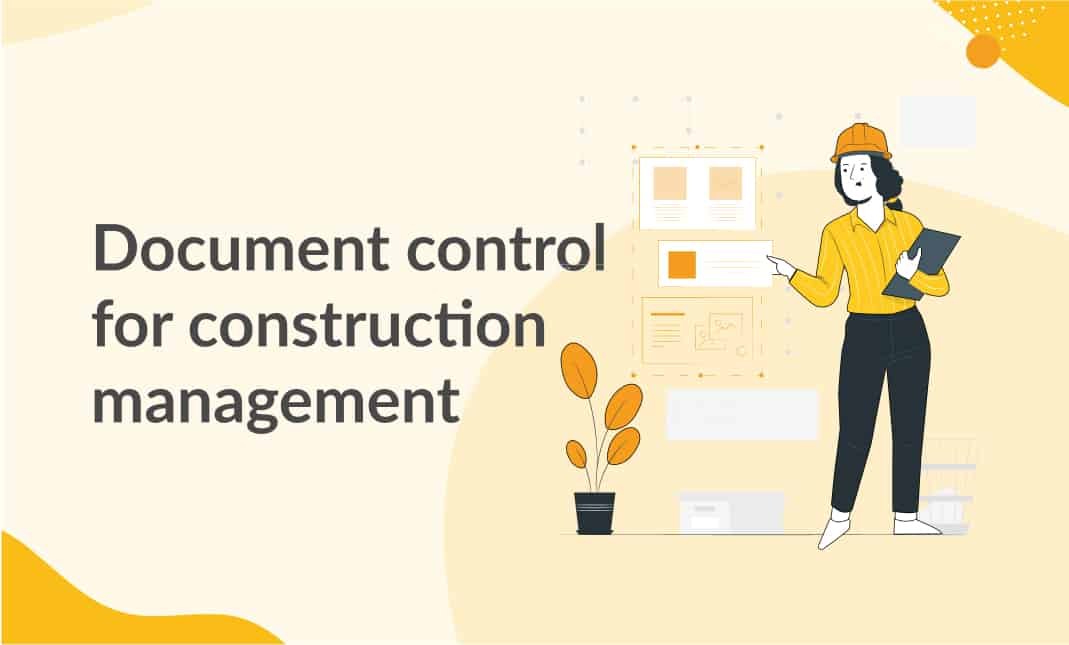Simplify Your Process: Construction Document Management Made Easy
Simplify Your Process: Construction Document Management Made Easy
Blog Article
Enhancing Workflow Performance: Designer's Professional Approaches for Building And Construction Record Monitoring
In the world of building design and building and construction, the precise management of papers stands as a cornerstone for task success. Engineers employ different methods to enhance operations efficiency and streamline building and construction record management procedures. From experienced company strategies to the integration of joint systems and the implementation of safe data management remedies, designers navigate an intricate landscape of methods and devices. Among this intricacy, a choose couple of expert strategies have arised as essential in optimizing process efficiency. These approaches not only make sure smooth project development yet additionally hold the key to unlocking boosted productivity and precision in the detailed world of building record monitoring.
Key Paper Company Techniques
When taking care of building and construction records, one of the essential strategies that architects use is establishing a reliable and organized organization system. This system generally involves classifying documents based upon their type, such as illustrations, specs, contracts, and permits. By producing clear and unique classifications, engineers can quickly find certain information when required, saving time and reducing errors in the building and construction procedure.
Within each classification, architects better arrange papers by creating subfolders or utilizing numbering systems to signify versions or revisions (construction document management). This ordered framework makes certain that the most current and pertinent information is quickly accessible while maintaining a document of changes made throughout the project timeline
Moreover, engineers typically make use of electronic paper management systems that supply functions like keyword search features, variation control, and gain access to constraints to enhance organization and partnership among project stakeholders. These tools simplify the document access procedure, advertise real-time updates, and promote seamless interaction, ultimately adding to the general success of the construction project.
Collaborative System Assimilation
To maximize record monitoring performance in construction tasks, engineers flawlessly incorporate collective platforms to enhance interaction and simplify coordination amongst project stakeholders. By leveraging collective systems such as job management software application, cloud-based storage space systems, and communication devices, designers can create a centralized center for all project-related records and communication channels. These platforms permit employee to gain access to, testimonial, and team up on papers in real-time, minimizing delays and the risk of errors connected with standard file monitoring techniques.
Collective system combination likewise promotes transparency and liability within the task team, as all stakeholders have presence right into the most current job updates and alterations. By streamlining communication and paper sharing, architects can ensure that all employee are functioning from the most up-to-date info, decreasing the chances of misconceptions or conflicts emerging as a result of outdated records.
Furthermore, joint systems make it possible for smooth cooperation in between architects, professionals, customers, and various other task stakeholders, advertising a much more effective and natural job process. By damaging down interaction obstacles and facilitating details exchange, architects can drive productivity and technology in building jobs, eventually resulting in successful project end results.
Version Control Best Practices
Applying efficient variation control methods is important for preserving paper precision and uniformity in building projects. By establishing a clear system for taking care of modifications, task groups can ensure that everyone is functioning from one of have a peek at this website the most up-to-date paperwork, lowering the risk of errors and disparities during the building and construction stage.
Among the essential ideal techniques for variation control is to assign special identifiers to each document variation. This can be achieved click for more by making use of a numbering system or date stamp that clearly suggests the order of modifications. By plainly labeling each model, staff member can easily track the development of the document and recognize the most current version.

Automation Devices for Performance

File control software application, like Procore or PlanGrid, streamlines project paperwork, making it quickly obtainable to all stakeholders. These systems enable real-time cooperation, version control, and automated backups, securing against data loss. Furthermore, Structure Details Modeling (BIM) software program automates the generation of construction drawings and makes certain that changes are integrated throughout all related documents.
Incorporating automation tools with cloud storage options better enhances availability and safety. By automating the record administration process, project groups can focus their time and initiative on value-adding tasks, inevitably improving efficiency and project outcomes.
Secure Information Management Solutions
Properly taking care of and securing project information is extremely important in the construction sector to ensure privacy and stability throughout the job lifecycle. Safe information administration remedies play a vital role in pop over to this web-site securing delicate info from unauthorized accessibility or violations. Architectural companies can make use of encrypted cloud storage solutions to safely save and share job files with authorized personnel. Executing accessibility controls, such as individual verification and approval setups, ensures that only accredited individuals can view or customize delicate data.
In addition, making use of electronic legal rights administration (DRM) tools includes an added layer of security by stopping the unauthorized circulation or replication of task papers. Normal information backups are vital to alleviate the risk of data loss due to unforeseen conditions like hardware failures or cyber-attacks. Collaborative systems with built-in safety and security attributes allow seamless communication and file sharing among job staff member while keeping information stability.
Verdict
In conclusion, carrying out crucial record organization methods, integrating joint systems, practicing variation control best techniques, using automation devices, and taking on secure information administration services are crucial strategies for boosting workflow efficiency in building and construction file monitoring. These expert strategies can streamline procedures, improve interaction, guarantee accuracy, and preserve data safety throughout the construction job lifecycle.
In the realm of architectural layout and construction, the precise administration of documents stands as a keystone for project success. These methods not only ensure smooth project development however additionally hold the key to opening boosted efficiency and precision in the elaborate realm of construction file monitoring.
To enhance document monitoring effectiveness in building and construction jobs, architects flawlessly integrate collective platforms to enhance communication and enhance coordination among project stakeholders. These systems allow group participants to gain access to, testimonial, and collaborate on records in real-time, minimizing delays and the risk of mistakes connected with typical record monitoring methods.
Using automation devices in building and construction record administration significantly enhances effectiveness and enhances processes for project groups. construction document management.
Report this page